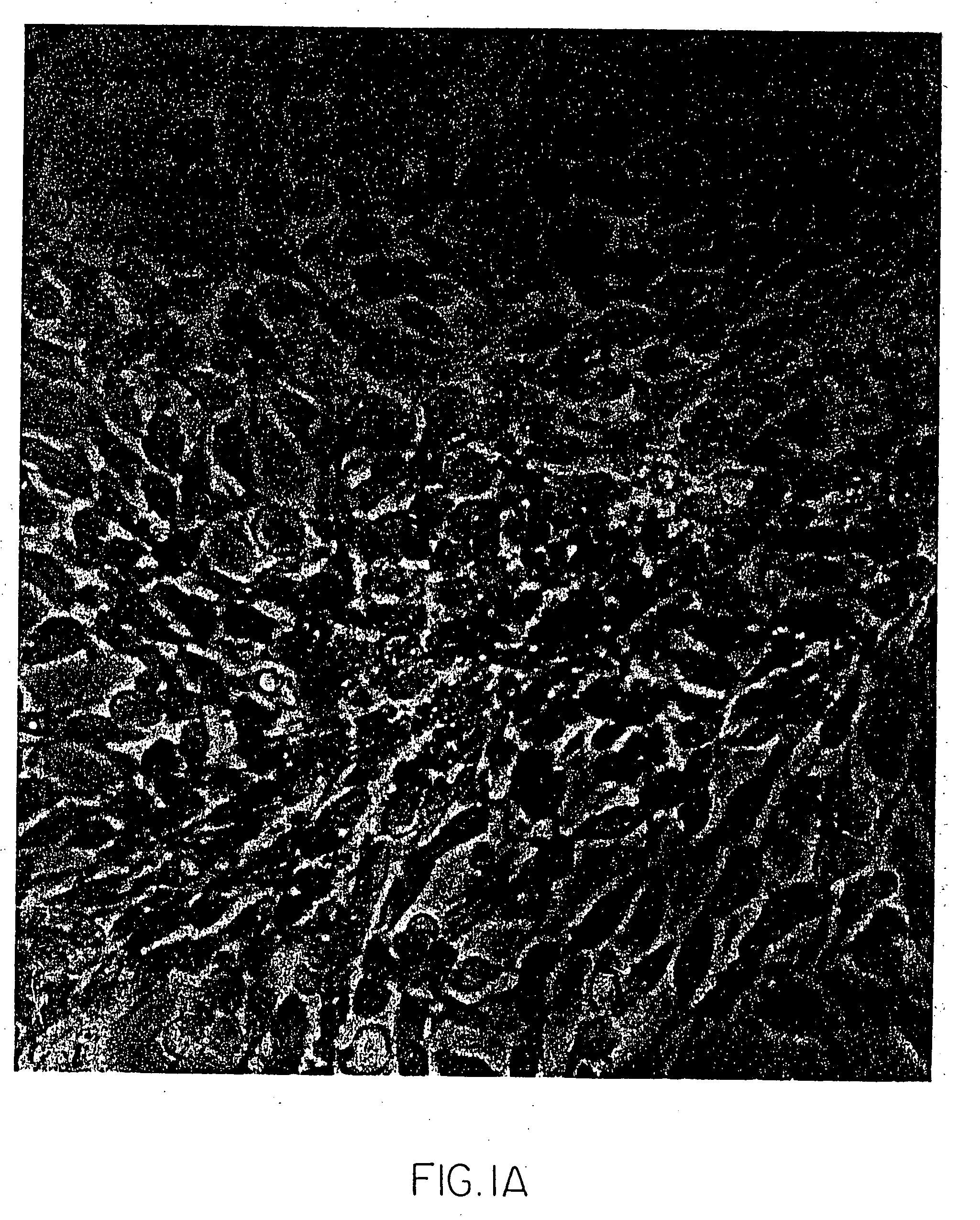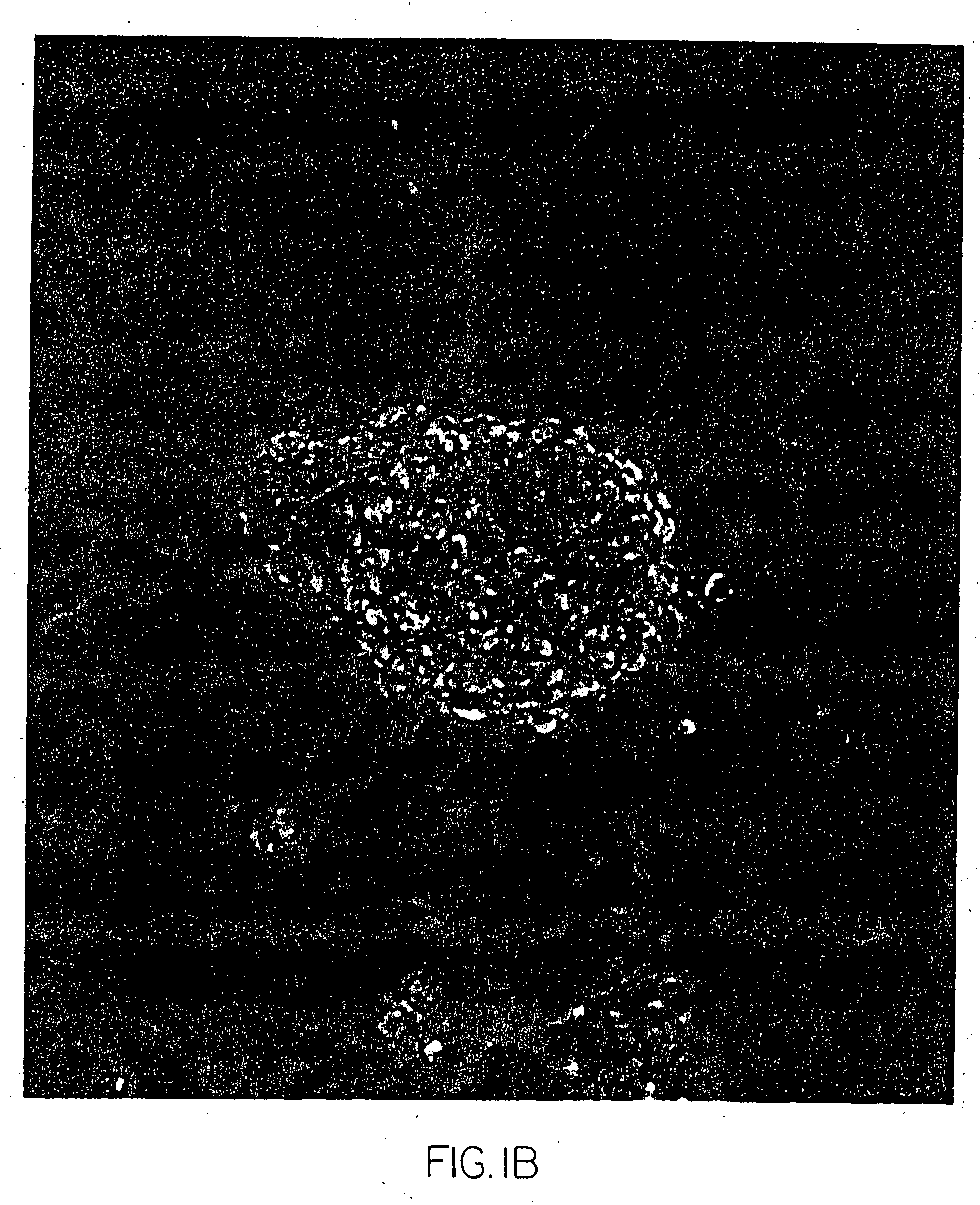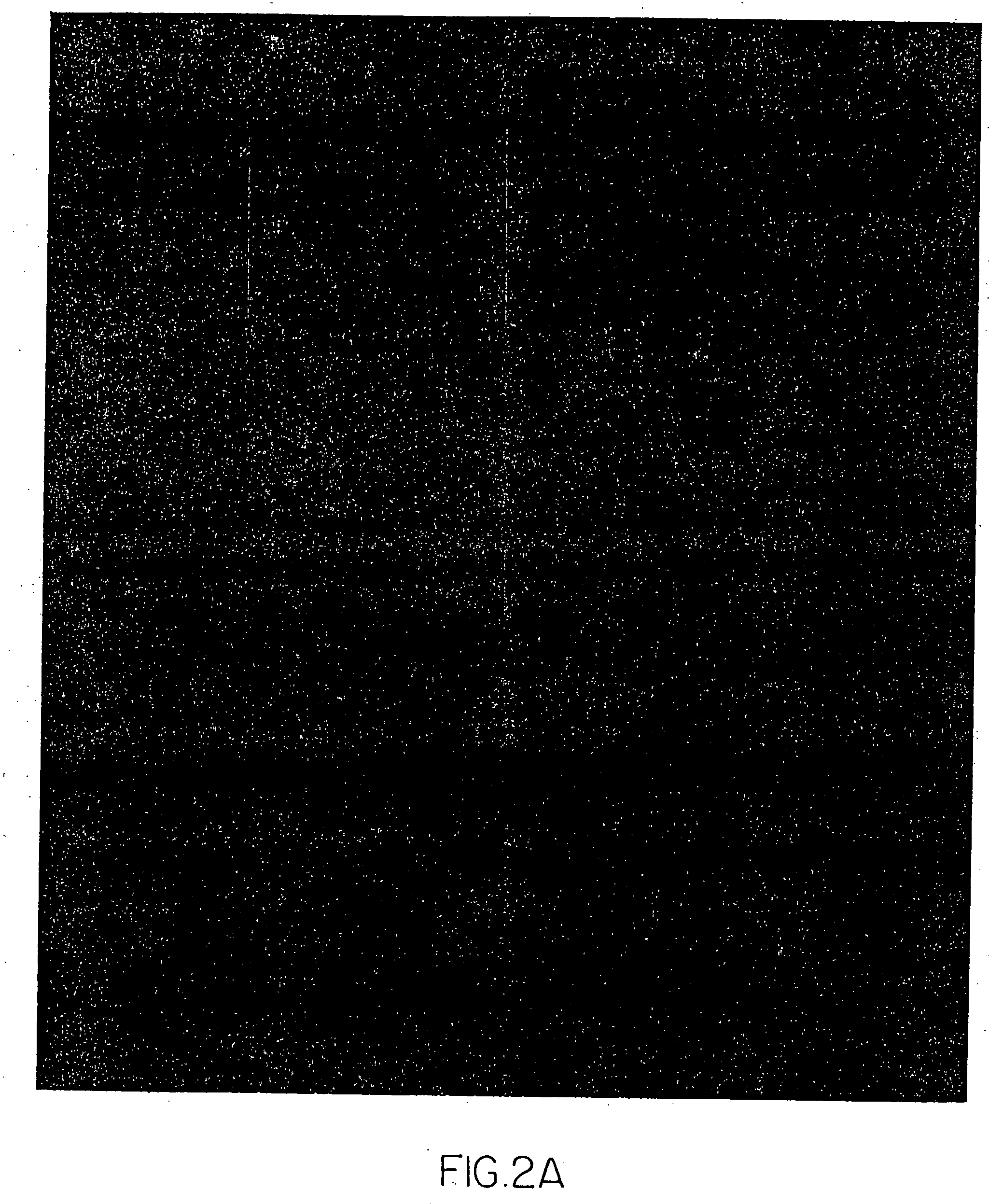Long-term cell culture compositions and genetically modified animals derived therefrom
a cell culture composition and long-term technology, applied in the field of neural stem cells, can solve the problems of high mortality rate in utero or perinatally, difficulty in obtaining neural stem cell lines, and development abnormalities associated with nuclear transfer technology using somatic cells
- Summary
- Abstract
- Description
- Claims
- Application Information
AI Technical Summary
Benefits of technology
Problems solved by technology
Method used
Image
Examples
example 1
Preparation of Foetal Neural Stem Cells
[0143] Tissue culture plates were predated with fibronectin at 1 g / ml and poly-L-Ornithine at 15 μg / ml in DMEM / F12 for 2-24 hours at 37° C.; 5% CO2. (Enough volume was used to cover the surface). The fibronectin / poly-L-Ornithine was aspirated and plates washed with DMEM / F12. This preparation can be stored at room temp for several days.
[0144] A pregnant rat (eg. Sprague-Dawley) was humanely killed at 9.5-16.5 days gestation by CO2 asphyxiation. More preferably the foetuses are obtained at 12.5-14.5 days of gestation. Foetuses were removed and placed into a tube with PBS containing penicillin / streptomycin.
[0145] Membranes from the foetuses were removed and their heads were separated from their bodies. The pooled foetal heads were placed into a 100 mm petridish and the tissue was minced with a blunt object (the tip of a syringe) until it was homogeneous in size. A syringe was used to aspirate the minced tissue which was then transferred into a ...
example 2
Preferred Defined Medium for Culturing of Foetal Neural Stem Cells
[0148] Neurobasal-A media® (Life Technologies), containing Insulin-Transferrin-Selenium (Life technologies)—1:100; EGF (Life Technologies) 10 ng / ml bFGF (Life Technologies) 10 ng / ml; Chemically defined lipid concentrate (Life Technologies)—1:100; N-2 supplement (Life Technologies) 1:100; B-27 supplement (Life technologies) 1:100, L-glutamine 1 mM; 200 U / ml Penicillin, 200 μg / ml Streptomycin.
example 3
Alternate Defined Medium for Culturing Foetal Neural Stem Cells
[0149] The FNS cell medium suitable for the present invention comprises Dulbecco-modified Eagle's medium (DMEM) comprising 15 mM 4(2-hydroxyethyl)-1-piperazine-ethanesulfonic acid, 4.5 g / l glucose, 1.2 g / A Bicarbonate, 200 U / ml Penicillin, 200 μg / ml Streptomycin, and the following additional components are added prior to use of the media:
[0150] Bovine insulin (10 μg / ml), Human transferrin (25 μg / ml), Mouse EGF (2-20 ng / ml), Sodium selenite 10 nM, and Human HDL (freshly isolated) 25 μg / ml. The EGF growth factor may be substituted with bFGF (FGF-2) or any other suitable mitogenic growth factors.
PUM
| Property | Measurement | Unit |
|---|---|---|
| Density | aaaaa | aaaaa |
| Time | aaaaa | aaaaa |
| Molar density | aaaaa | aaaaa |
Abstract
Description
Claims
Application Information
 Login to View More
Login to View More - R&D
- Intellectual Property
- Life Sciences
- Materials
- Tech Scout
- Unparalleled Data Quality
- Higher Quality Content
- 60% Fewer Hallucinations
Browse by: Latest US Patents, China's latest patents, Technical Efficacy Thesaurus, Application Domain, Technology Topic, Popular Technical Reports.
© 2025 PatSnap. All rights reserved.Legal|Privacy policy|Modern Slavery Act Transparency Statement|Sitemap|About US| Contact US: help@patsnap.com



